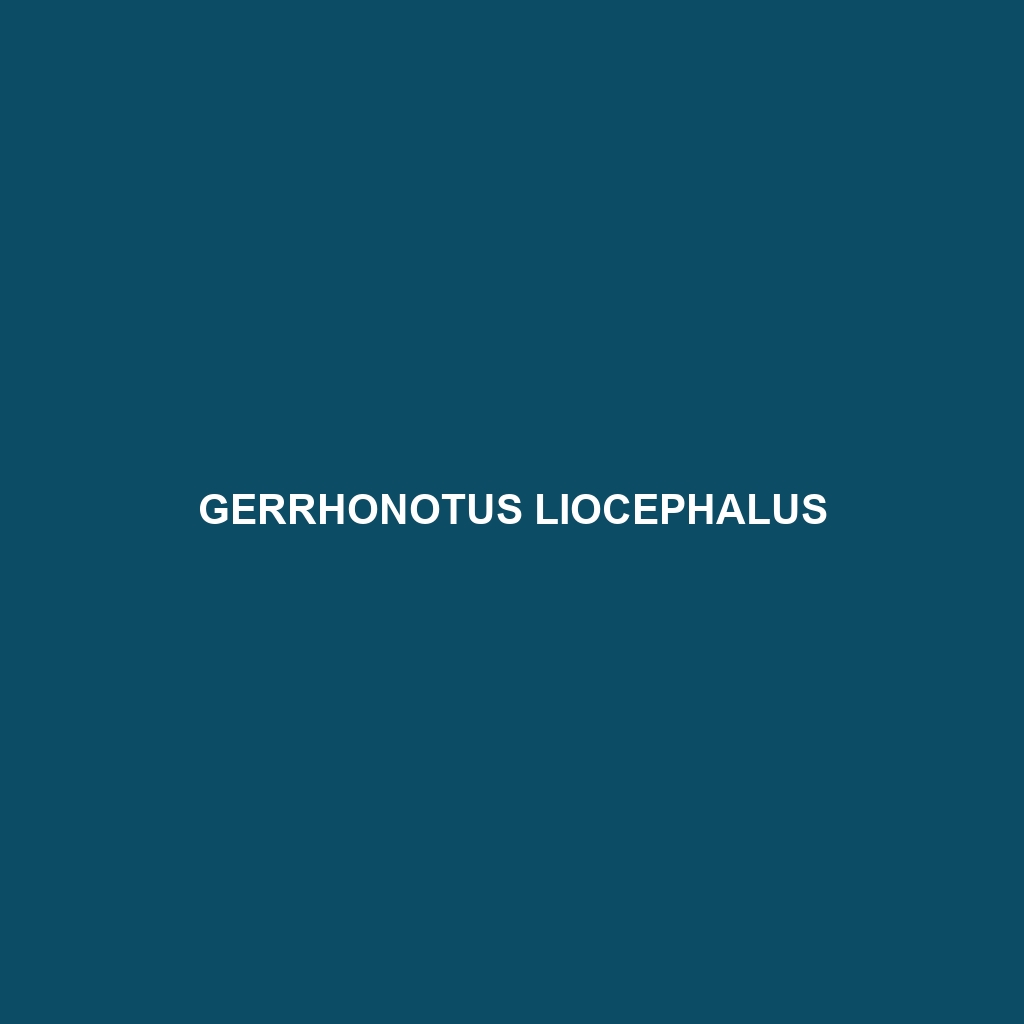Common Name
Gerrhonotus liocephalus
Scientific Name
Gerrhonotus liocephalus
Habitat
Gerrhonotus liocephalus, commonly known as the Texas alligator lizard, is primarily found in the temperate forests and shrublands of the United States, specifically in the south-central regions of Texas. This species thrives in areas characterized by a mix of deciduous and evergreen trees, rocky slopes, and brushy undergrowth. Additionally, these lizards have adapted well to environments that include grasslands and even urban areas where they find shelter among rocks and debris. The climate in their habitats tends to be warm and dry, with temperate seasonal variations that dictate their behavior and breeding cycles.
Physical Characteristics
The Texas alligator lizard is a medium-sized lizard, typically reaching lengths of 12 to 18 inches (30 to 46 cm). It exhibits a robust, elongated body that is covered in smooth, shiny scales, which are predominantly brown or gray with darker banding. The head is distinctively broad and flattened, resembling that of an alligator, which gives it its name. Unique features include its long tail, which is often used for balance and maneuvering through complex terrains. The coloration of Gerrhonotus liocephalus acts as effective camouflage, allowing it to blend seamlessly into its natural surroundings, enhancing its ability to evade predators.
Behavior
Gerrhonotus liocephalus exhibits a variety of fascinating behaviors. These lizards are primarily diurnal, active during the day, but have also shown nocturnal behavior during particularly hot conditions to avoid the peak sun. They are known for their social interactions, often seen basking together in sunny spots or engaging in displays of dominance. Mating rituals involve male-to-male combat, showcasing their agility and strength, while females are observed exhibiting territorial behavior, particularly during egg-laying seasons. Their habitat preferences often dictate these behaviors, as they are skilled at navigating rocky terrains and dense vegetation.
Diet
This species is classified as an omnivore, displaying a diverse range of dietary habits. Gerrhonotus liocephalus primarily feeds on insects, making it an effective insectivore, but it also consumes small plants and fruits. They are known to hunt down crickets, beetles, and other small invertebrates. Their feeding patterns are opportunistic, capitalizing on the abundance of food sources available in their habitat. The lizards employ a stealthy approach when hunting, often ambushing their prey with quick, agile movements.
Reproduction
The reproductive cycle of Gerrhonotus liocephalus commences in the spring, following hibernation. Mating often occurs during the warmer months, leading to a gestation period of approximately 60 to 90 days. Females typically lay a clutch of 4 to 6 eggs, which they bury under soft soil or among leaf litter to conceal them from predators. After the eggs hatch, the offspring emerge fully formed and independent, relying on their innate skills to survive in the wild. Parental care is minimal, with no further investment from the adults once the eggs are laid.
Conservation Status
Gerrhonotus liocephalus is currently categorized as Least Concern by the International Union for Conservation of Nature (IUCN). However, habitat loss due to urban development and agricultural sprawl poses significant threats to its natural populations. Conservation efforts aim to maintain suitable habitats and raise awareness about the ecological importance of this species. Environmental agencies are working to mitigate these challenges by promoting habitat preservation and conducting further research into its population dynamics.
Interesting Facts
One interesting fact about Gerrhonotus liocephalus is its remarkable ability to regenerate lost tails, a trait not uncommon among lizards. This adaptation provides a significant advantage by allowing the lizard to escape predators. Another unique characteristic is their potential for longevity, with some individuals living over 10 years in the wild under optimal conditions. Moreover, their skin has a unique texture that can create a defensive posture, deterring predators by appearing larger and more intimidating.
Role in Ecosystem
Gerrhonotus liocephalus plays a crucial role in its ecosystem, serving as both predator and prey. As an insectivore, it helps control insect populations, contributing to the overall health of its environment. Additionally, it serves as a food source for larger predators, including birds of prey and mammals, thus maintaining the balance within the food web. By foraging among the underbrush, these lizards also aid in seed dispersal and soil aeration, further supporting the ecological processes that sustain their habitats.
